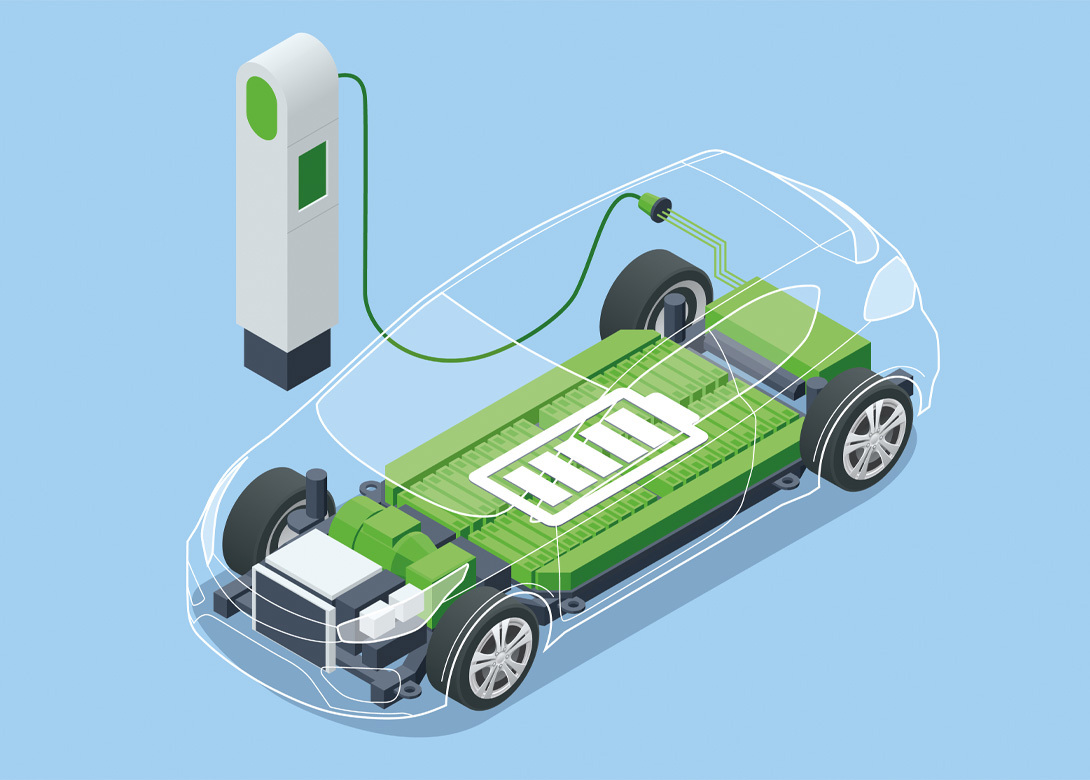
Wevo-Chemie GmbH has developed a range of liquid adhesive systems to meet the demands of high temperature applications in electric vehicle (EV) batteries.
High temperatures are generated in EV battery cells during charging and this heat must be dissipated. Until now, this has mostly been achieved by inserting silicone-based pads between the cells and the cooling system. However, the battery manufacturing process increasingly insists on the use of Thermal Interface Materials (TIMs) with adhesive properties, something that silicone pads are unable to provide.
Enter the new Wevo-Chemie liquid adhesives, which can dissipate heat generated during the charging process from the battery cells to the heat sink. The adhesives offer improved surface wetting; optimised heat dissipation; and can also be used as structural adhesives. In addition, these customisable polyurethanes also open up new possibilities in design.
With the automotive industry’s ongoing upgrade of EV voltages from 400V to 800V, this is leading to, among other things, an increase in the efficiency of the battery charging process. This, however, results in high temperatures, including inside the battery cells and for which TIM pads can no longer provide adequate heat dissipation. This is due to inlaid solutions inserted between the cells and the cooling system not fully compensating for the uneven surfaces of the cells or cooling system, in turn leading to hotspots and potential damage to the cells. What’s more, insertion systems, such as pads, can no longer satisfy the complex geometries of modern battery designs.
This is where Wevo claims its customised liquid adhesive systems offer an ideal solution for EV applications, with their flexibility enabling them to be applied directly to the cooling system – in a 3D manner, if required – and pressed together with the battery cells. This prevents air voids from forming and ensures immediate dissipation of the heat generated to the cooling system.
Wevo has set the thixotropy and, therefore, the rheological properties of these adhesive systems, so they can be applied as a vertical bead that doesn’t collapse – even if the components are tilted or rotated during the manufacturing process. At the same time, corresponding special fillers ensure the viscosity of the potting compound does not rise disproportionately in response to thermal change, enabling trouble-free processing in standard dosing systems – despite the compound’s high thermal conductivity. Also, the reactivity of the material is individually adjusted to a customer’s particular process, which ensures fast downstream processing and short production cycles.
As mentioned, these products can also be used as structural adhesives for durable and dimensionally-stable bonding applications, because polyurethane makes it possible, for example, to dispense with certain screwed connections – helping to reduce the overall weight of a battery and increase the range it offers. This makes it easier for battery manufacturers to overcome challenges they might come up against in the design process.

Will joined Fastener + Fixing Magazine in 2007 and over the last 15 years has experienced every facet of the fastener sector - interviewing key figures within the industry and visiting leading companies and exhibitions around the globe.
Will manages the content strategy across all platforms and is the guardian for the high editorial standards that the Magazine is renowned.
Don't have an account? Sign Up
Signing up to Fastener + Fixing Magazine enables you to manage your account details.